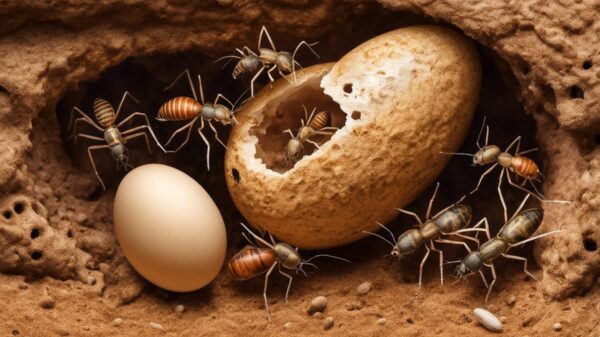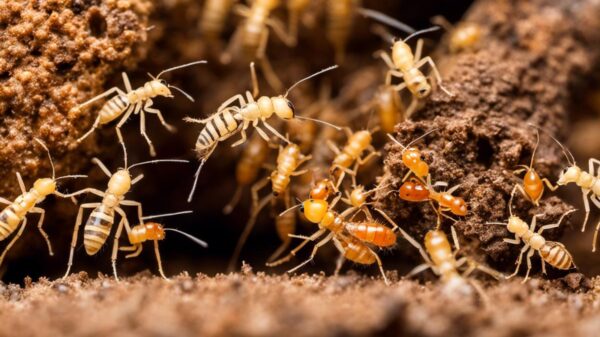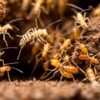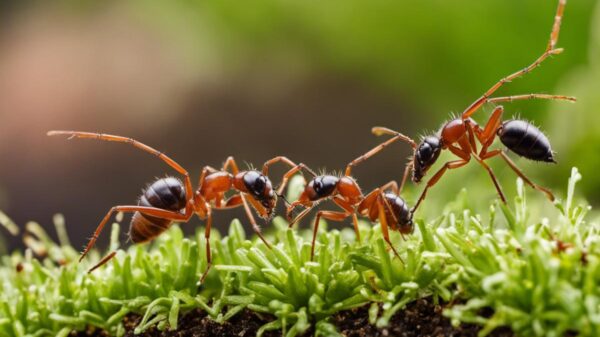Termites, industrious yet unwanted guests in our human habitats, pose a major threat to the structural integrity of housing worldwide. Gaining a comprehensive understanding of these creatures is instrumental in enacting effective control measures and ensuring the preservation of our homes. This article aims to elaborate on the biology, behavior, and life cycle of termites, as well as their diet preference and the undeniable signs of their uninvited presence. With an in-depth exploration into the various types of termites and high-resolution images for visual aid, we equip ourselves with the knowledge to detect these small but significant critters. But knowledge alone isn’t a shield; thus, we shall delve into prevention techniques that could help your home remain termite-free, alongside a rundown of potent eradication methods for already infested residences.
Understanding Termites
Understanding Termites Biology and Behavior
Termites are insects that belong to the order Blattodea, which also includes cockroaches. They vary in size but are typically about the size of ants, from a quarter-inch to a half-inch in length. Termites are social creatures, which means they form organized colonies that are ruled by a queen and a king. Most termites are blind, but reproduce-capable members of a termite colony, known as alates or swarmers, can see. They also have wings, which they lose after they mate. This sheds light on their ability to infest new locations.
Life Cycle of Termites
The termite life cycle begins when winged adults swarm and locate a new location to establish a colony. After swarming, termites mate and seek a nesting site. Once the queen lays her eggs, they hatch into immature termites or nymphs. As part of their growth, nymphs go through a series of molts before becoming either workers, soldiers, or swarmers. The life span varies between different members of the termite colony with workers living for about one to two years while queen termites can live for decades in optimal conditions.
Diet of Termites
Termites are detritivores, feeding on plant material and cellulose, primarily in the form of wood. They extract nutrients from cellulose with the help of microorganisms in their gut that can break down the material. Termites pose a significant threat to wooden structures and buildings, as their feeding habits can lead to widespread damage.
Types of Termites
There are approximately 2,000 known species of termites, but they are generally classified into three main types: subterranean, drywood, and dampwood based on their preferred living conditions and the extent of damage they can cause. Subterranean termites live in soil and construct tunnels to reach food sources. Drywood termites are typically found in coastal regions and can live in the wood they consume. Dampwood termites prefer humid environments and decaying wood.
Recognizing Signs of Termites
Identifying the presence of termites can be tricky due to their discreet behavior. However, recognizing early signs can limit the extent of damage. Some of the common signs include discarded wings, which are often a clear indicator of a recent swarm. Also, mud tubes at the base of walls or pillars are a signature sign of subterranean termite infestation. Other indicators include sagging floors, hollow-sounding wood, and fecal pellets or termite droppings.
Understanding the biology, living habits, and recognizing signs of infestation is essential to effectively controlling termites. Recognizing a termite problem early on can save considerable time and expense in treating and repairing termite damage.

Signs of Termites
Understanding Termites: Visual Signs
Termites are often called ‘silent destroyers’ due to their ability to chew through wood, flooring, and even wallpaper undetected until extensive damage has been made. Thus, early identification of a termite infestation is essential to avoid significant structural damage. To recognize termites, visual signs are imperative.
The most common type of termite in the United States is the subterranean termite. A clear indication of these would be the presence of mud tubes, which these termites build to tunnel through your home. Mud tubes are pencil-sized, tend to be brownish, and are often found along the structurally compromised section of a building, like the foundation or in the crawl spaces.
Apart from mud tubes, swarmers or winged termites are another visual sign. These are usually more visible in the spring when they leave the nest to start new colonies. It’s not uncommon to find discarded wings near windows, doors, heating vents, or in cobwebs.
Identifying Termites: Audible Cues
Termites are tiny creatures, but the noises they produce can actually help in their detection. If you’re hearing a faint clicking sound from your walls, it might be because soldier termites are alerting the colony of potential danger by banging their heads against the wood, producing a distinct click. Worker termites, which are responsible for eating and causing damage to your structures, are noisy eaters. If you put your ear to the infested wood, you can hear them munching away.
Damage Caused by Termites
Termites can cause extensive and expensive structural damage if left unchecked. An obvious sign of termite damage is wood that sounds hollow when tapped. Termites tend to eat wood from the inside out, leaving a thin veneer of wood or paint, so if your home’s wood sounds hollow, that’s a clear sign of termites.
Other signs may include sagging floors, ceilings or walls, which are usually a sign of severe infestation. You may also discover small piles of feces that resemble sawdust near a termite nest. Or, you might notice doors and windows sticking, which could be the result of their tunneling producing extra moisture causing frames to warp.
Remember, termites can go undetected for extended periods, causing considerable damage in the process. Regular inspections by professionals are recommended along with these personal check-ins for early detection and treatment.
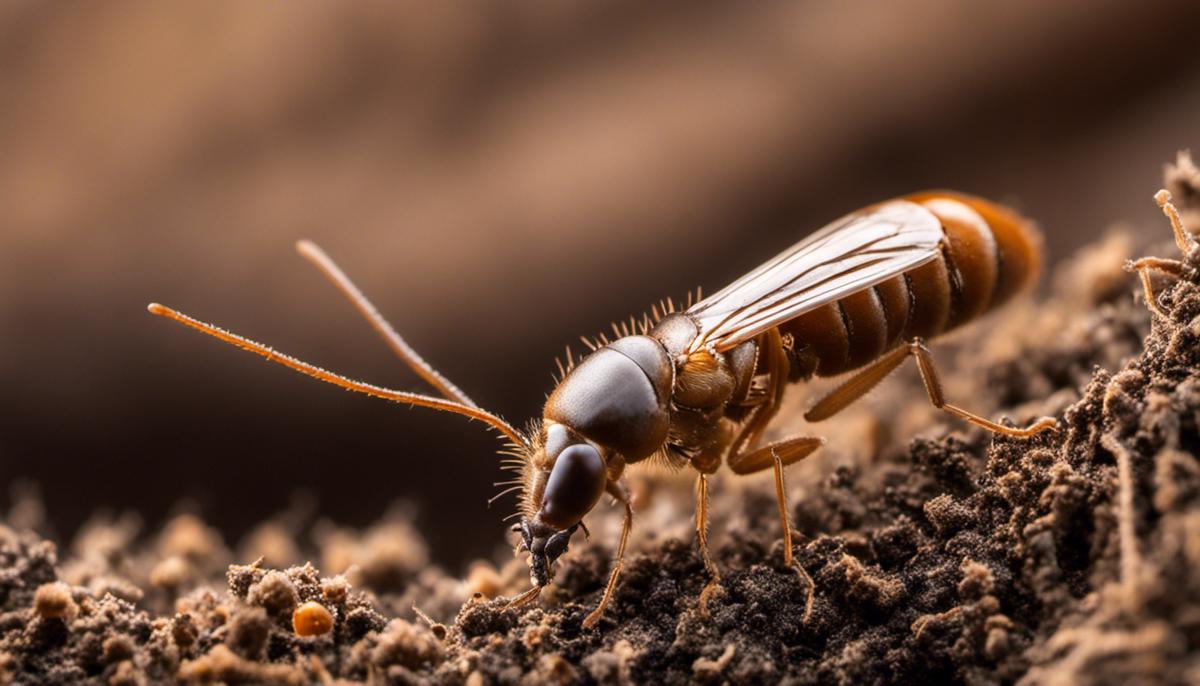
Termite Prevention Techniques
Understanding Termites and Their Behavior
Termites are known for their destructive behavior, particularly towards wooden structures. These little critters feast on cellulose, a primary component in wood, making residential homes prime territory. Being proactive can help deter termites from invading your home.
Addressing Potential Food Sources
The first step to preventing a termite infestation is to eliminate any potential food sources. Termites commonly feed on wood, so try to keep firewood and scrap wood away from the immediate vicinity of your home. Store such materials at least 20 feet away and keep them off the ground. Cleaning up dead trees, stumps, and debris from your property can also deter termites from taking up residence.
Ensuring Proper Ventilation
Correct ventilation is crucial for keeping your home termite-free. Termites thrive in damp, humid conditions, so ensuring your property is well-ventilated, especially areas like basements, crawl spaces, and attics, can help to avoid an infestation. Install vents where necessary, regularly check to make sure existing vents aren’t blocked, and consider using a dehumidifier in areas prone to moisture.
Preventing Moisture Build-up
In addition to ventilation, it’s necessary to control moisture throughout your property to prevent a termite infestation. Be vigilant about leaks in your roof, pipes, and faucets, as the moisture from these can attract termites. Maintain a healthy distance between the soil and any wood portions of your home and direct water away from your home’s foundation with properly functioning downspouts, gutters, and splash blocks.
Utilizing Termite-Resistant Building Materials
Wherever possible, use termite-resistant building materials. While not completely termite-proof, these kinds of materials can help slow down the progress of termites. Termite-resistant materials include concrete, metal, cypress, cedar, and redwood. Also, consider using termite shields in the foundations of your home, which can prevent termites from accessing the wood.
Conducting Regular Home Inspections
Routine home inspections are one of the most effective prevention measures against termites. A professional pest control company can conduct thorough examinations every 2-3 years, but you should regularly perform your own checks as well. Look out for early signs of termite damage, such as crumbling wood, sagging floors or ceilings, and pinpoint holes in drywall. Regularly inspect the exterior of your home for mud tubes, which termites often build on the surface of walls or foundations.
Remember, the best defense against termites is a good offense. By taking proactive steps to make your home less inviting to termites, you can protect your property and peace of mind.
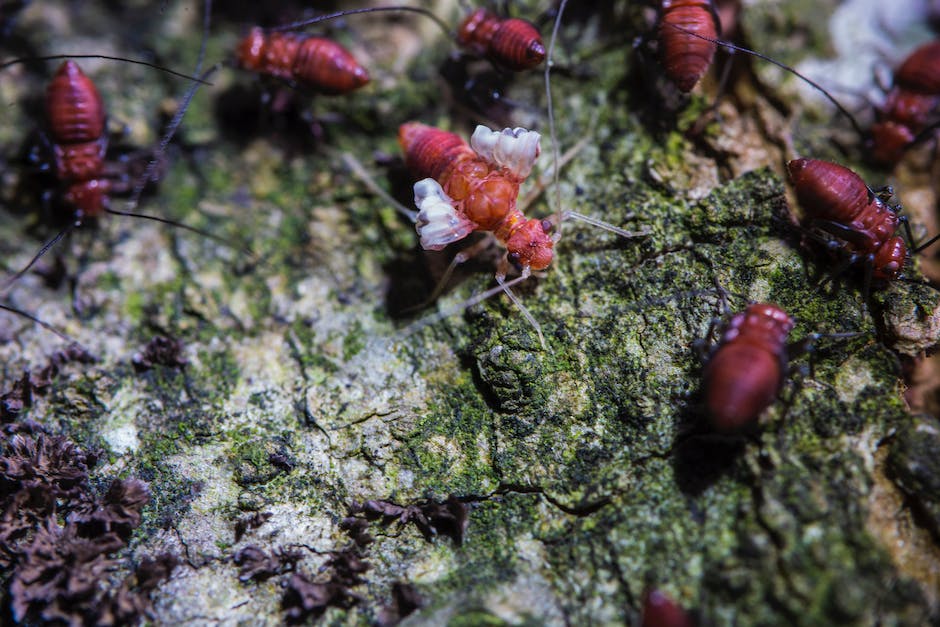
Termite Eradication Methods
Chemical Methods for Termite Control: Termiticides and Baits
Termiticides are chemical substances specifically produced to eliminate termites. These solutions are often applied to soil around the home or in areas susceptible to infestation, forming a barrier that termites typically avoid crossing. Two types of termiticides exist: repellent and non-repellent. Repellent termiticides aim to deter termites from approaching a structure, while non-repellent varieties stealthily kill termites without them being aware of the poison’s presence.
Termite baits, on the other hand, operate differently. These consist of a piece of wood or another type of cellulose material that attracts termites, combined with a slow-acting poison. Termites then bring the bait back to their colony, eventually causing its demise. These baits are typically employed in stations around your property and require regular monitoring.
Physical Methods for Termite Control: Heat Treatment and Freezing
Another method for controlling termites is heat treatment, which involves raising the temperature in identified infestation areas to lethal levels for the termites. In this method, specialized equipment is used to produce heat over 120 degrees Fahrenheit, killing off the termites.
Alternatively, freezing is applied to eliminate termites, although this method is commonly used for more localized infestations. The freezing method employs liquid nitrogen to drop the temperature, causing the termites to die from the sudden extreme cold.
Biological Methods for Termite Control: Introduction of Natural Predators
Biological control methods mainly involve the use of natural termite predators, such as nematodes and several types of beetles. These predators can be introduced into termite-infested areas to help control the population.
Nematodes, for example, are microscopic roundworms that can infest termite colonies and spread a bacteria that quickly kills the host. This method, however, is less predictable and more dependent on environmental conditions.
Services Offered by Professional Pest Control Agencies
Professional pest control agencies provide a comprehensive suite of services to identify, control, and prevent termites. These include initial inspections to assess the extent of the infestation, selection and application of suitable management methods, and follow-up inspections to ensure the effectiveness of the treatment.
Many agencies offer comprehensive warranties, promising to retreat or repair damage if termites return within a specified period post-treatment. Some also provide preventative services, such as regular inspections and treatments, aimed at keeping termites at bay. It’s essential to research and choose a reputable pest control agency invested in using environmentally friendly methods that cause minimal harm to natural ecosystems.
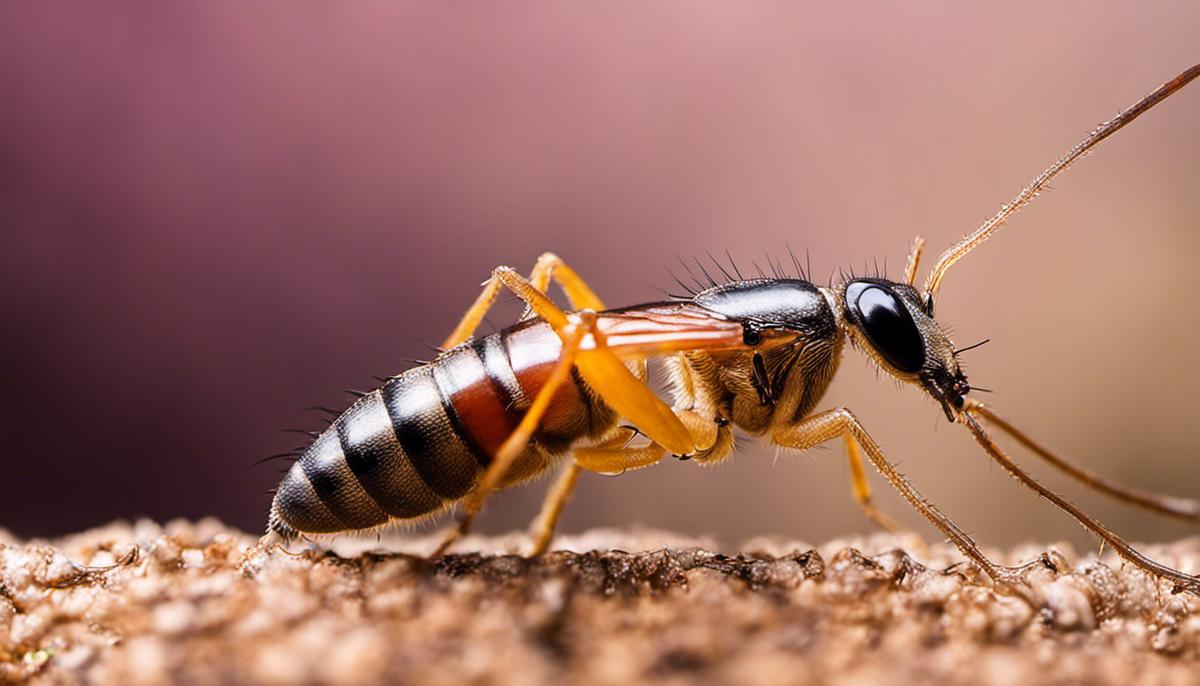
Having traversed the detailed landscapes of termite biology and behavior, signs of infestation, preventive measures, and control methods, we are now equipped with a well-rounded understanding of these wood-consuming creatures. It’s always key to remember that an ounce of prevention is worth a pound of cure. By vigilantly ensuring potential food sources are minimized, proper ventilation is upheld, and moisture buildup is avoided, we can discourage termite infestation. However, if you find your home already besieged by these industrious insects, a range of chemical, physical, and biological solutions are at your disposal. Seeking the help of professional pest control agencies may even be a wise recourse when facing persistent infestations. Let us foster a proactive approach and promote safer, termite-free residences.



